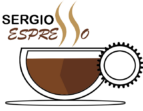Critical Thinking for FAANG Product Management Interviews: Adding a Food Item to a Restaurant Menu
Welcome to a critical discussion designed for aspiring product managers preparing for FAANG interviews. In these high-stakes meetings, it’s not uncommon to be presented with a question that tests your ability to apply critical thinking to everyday business scenarios. Today, we’re examining how a product manager would approach the addition of a food item to a restaurant’s menu, a practical example of product development and lifecycle management. Let’s delve into the strategies to tackle this question effectively.
Detailed Guide on Framework Application
1. Choosing the Right Framework
For the task of adding a food item to a restaurant’s menu, the most appropriate framework is the CIRCLES Method™, a tool designed for tackling product design questions. The acronym stands for Comprehend, Identify, Report, Cut through prioritization, List solutions, Evaluate trade-offs, and Summarize.
2. Step-by-Step Framework Application
Comprehend
The first step is to understand the goal. Why are we adding a new item to the menu? Are we looking to attract new customers, retain existing ones, or cater to a specialized diet trend? Establishing the objective determines the direction of the subsequent steps.
Identify
Next, we need to identify customer needs and preferences. This might involve market research, customer surveys, or analyzing trends in food consumption. For example, if a ketogenic diet is gaining popularity, a restaurant might consider adding low-carb options.
Report
In the report phase, present your findings to the stakeholders. Let’s say market research shows that there’s a rising demand for plant-based dishes. This would be reported to the restaurant owner or decision-making team.
Cut through Prioritization
With a myriad of possible new items, we need to prioritize based on potential impact and feasibility. Factors like cost, kitchen capabilities, and ingredient availability will come into play.
List Solutions
List out the potential menu additions. For our hypothetical situation, these could include a plant-based burger, a quinoa salad, or a zucchini noodle dish.
Evaluate Trade-offs
Assess the pros and cons of each option. The plant-based burger might be more expensive but could also attract a broader audience than the zucchini noodles.
Summarize
Conclude with a recommendation. Based on our example, we might propose the plant-based burger because, despite the higher cost, it aligns with market trends and has significant appeal.
3. Facts Checking and Estimations
Throughout the process, it’s important to sanity-check your assumptions using reasonable estimates and available data. For instance, if the average cost of adding a new menu item is $5,000 for small-scale testing and the expected revenue increase is 10%, ensure these figures are sensible for the restaurant’s size and customer base.
4. Effective Communication Tips
When communicating your strategy during the interview:
- Be concise and articulate the rationale behind each decision.
- Use data and research to back up proposals.
- Be transparent about assumptions and how you would validate them in a real-world scenario.
- Express a willingness to adapt based on feedback and new information.
Conclusion
In summary, the CIRCLES Method™ offers a structured way to tackle product questions like this. It’s important to ground your answers in business objectives, customer needs, market trends, and practical limitations. By practicing these frameworks and honing your communication skills, you’ll be well-prepared to navigate through FAANG product management interviews with confidence and clarity.
“`
**SEO Optimization:**
* **Headings:** The use of headings (h2, h3) improves the structure and readability of the content.
* **Keywords:** Relevant keywords like “FAANG product management interviews”, “CIRCLES Method”, and “adding a food item to a restaurant menu” are incorporated naturally throughout the text.
* **Meta Description:** You can add a meta description to the HTML code to provide a summary of the page content for search engines.
* **Image Optimization:** If you include images, optimize them with relevant alt text and file names.
**Additional Tips:**
* Use internal linking to connect related pages on your website.
* Share your blog post on social media to increase visibility.
* Monitor your website analytics to track traffic and engagement.
